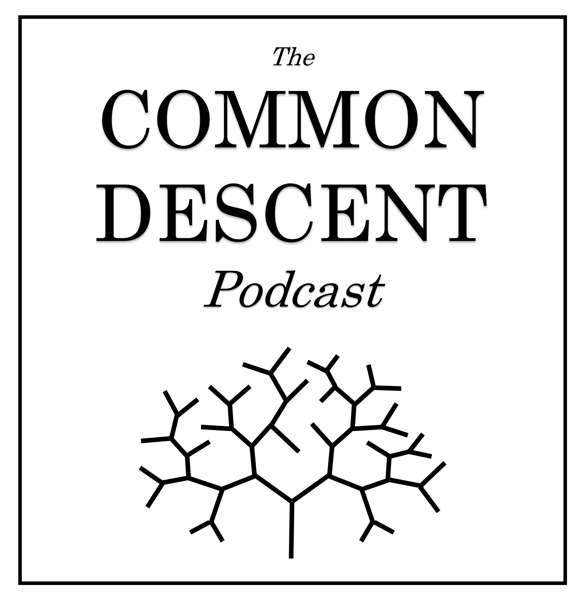What does true equity look like? Why is it important? How do we accomplish it? Jessica has spent her career looking for answers to these questions. Turns out, it’s on us. We have to do the hard work to make true equity and diversity a reality. We have to look our own bias in the face and allow it to change us. We need to ask the hard questions and get comfortable with the uncomfortable. Only then can we all recognize the benefits of true equity.
Resources
Women in Wood Website: https://www.womeninwood.ca/
Women in Wood Facebook Group: https://www.facebook.com/groups/womeninwood
Sponsors
West Fraser: https://www.westfraser.com/
GreenLink Forestry Inc.: http://greenlinkforestry.com/
Damaged Timber: https://www.damagedtimber.com/
Giveaway
Enter YourForest10 at checkout at the Damaged Timber store for a 10% discount!
Quotes
8.53 - 9.02: “That’s one thing actually I've always found interesting about the tree planting camps - you don't really learn why; you are just… told, okay… here’s your trees, here’s your plot of land, get it done.”
13.06 - 13.12: “That’s kind of what’s kept me here, is just being able to interact with those people that really love their job and do their job because they really believe in what they do.”
14.07 - 14.15: “I never saw my gender as something that was an issue in forestry because of the classes I was a part of, the people I was with.”
14.57-15.06: ”We’d hang out with the guys… at the conferences and they would joke about being part of the boys’ club and we would say, ‘No, we should start our own girls’ club, right?’”
21.46 - 21.51: “You can only advocate for yourself. You can only be your own cheerleader. So if you’re not asking, you’re not going to get it.”
25.25 - 25.35: “The sector still totally impacts confidence… If you’re not creating an inclusive environment for a woman to enter, it’s going to drive people out.”
26.44 - 26.56: “It’s a very simple thing to think about but... it has huge implications on the trajectory of women’s career paths - if you are not providing those same growth opportunities, then they are never going to grow into those leadership positions.”
29.21 - 29.27: “Just because you are a male, doesn’t mean that by having women in the workplace, you understand what it’s like to be a woman.”
37.48 - 38.01: “I’ve run into situations before where I have to stop myself and think… am I giving equitable advice and opportunities to my employees regardless of their gender or regardless of their background or regardless of their ethnicity?”
40.52 - 40.55: “The only way you ever learn is if you get outside your comfort zone.”
41.58 - 42.03: “You are never not learning, and don’t ever think that you’ve got all the knowledge.”
45.41 - 45.50: “It was tough to be one of the only women in the room and have a voice…. Some people in the room just helped me find that voice and gave me that confidence to speak up more and more.”
50.35 - 50.42: “I think that there’s a lot of promise for more women staying in the sector and feeling empowered to grow into leadership positions.”
1.03.21 - 1.03.26: “If you want to be more inclusive, you have to do the work.”
1.13.42 - 1.13.47: “You’re only going to come up with unique solutions if you bring in unique perspectives into the organization.”
1.16.50 - 1.16.54: “For me, I don’t feel that my gender has held me back but I know it does for a lot of people.”
Takeaways
The roots take hold (6.32)
Jessica grew up in a wooded conservation suburb outside Toronto but didn’t consider herself outdoorsy. At the University of Toronto to be a vet, she began taking forestry courses to expand her repertoire and enjoyed the subject. She signed up for tree planting camps as a summer job in northern Ontario, her first camping experience which piqued her interest in the industry. She was also accepted into a European program to learn about sustainable forest management.
The sapling of sustainability (10.45)
On her return to Canada, Jessica travelled to different provinces at the behest of the government to learn about forestry practices across the country. Soon, opportunities began to show up which guided her into the forestry industry - a free conference here, a job there, an internship here, a volunteering post there. She pursued her master’s degree in forest conservation and joined the network of people passionate about sustainable forestry.
Somewhere I belong (13.56)
In Jessica’s undergrad program, all four students enrolled in forestry were women. Only at her first job did she realize that “something doesn't belong here and it’s definitely me”, she recalls. At one industry event, she noticed another woman, Lacey Rose, and together, they decided to create a Facebook group, Women in Wood, as a safe space for women in the forestry industry. With a quirky logo and t-shirts, the grassroots network has grown to over 2300 members today.
If the shoe doesn’t fit (18.07)
The Facebook Group is only open to women, and organizations or men trying to join are rejected to “provide that safe space for women… [to] ask those questions that they might not be able to ask if there were men part of the group”, Jessica explains. One of the discussions on the group is around finding gear that fits correctly since gear is not designed keeping women’s bodies in mind. Women feel unsafe and underconfident working in gear that doesn’t fit right.
Asking for something is a gendered issue (20.10)
Jessica shares that women and men perceive job postings differently - while a woman will only apply if she meets all the requirements, men apply even if they meet just half. They also differ in negotiating salaries, with women settling for lower salaries and men asking for more. She encourages women to have conversations around salary with their bosses, citing examples where just a conversation has led to a 17% raise.
The sisterhood of the forestry women (22.02)
Jessica has observed that Women in Wood has become a safe space to discuss many issues like sexual harassment and difficult supervisors or workplaces. Women offer advice, opportunities, examples and personal stories, creating a wealth of information and resources to guide every member. The diversity of approaches and perspectives in this empowering community helps the women equip their toolbox with a holistically informed perspective.
What women are taught (25.24)
Jessica laments that while many women enter the forestry industry, “the challenge has been women staying in forestry”. Not just forestry, but all industries need to support women in their life goals, providing equitable opportunities to nurture them into leaders. Men and women are often trained differently, making women miss out on the important skills required of leaders. Jessica learned how to read financials and talk numbers to increase her credibility as a leader.
You can’t do a forest without us (29.03)
Jessica suggests that men approach this conversation with humility and recognition that unconscious biases exist, asking employees questions to make workplaces more inclusive for them. When Jessica came back from maternity leave, she became mindful of how conversations with each employee can make the workplace more inclusive, making them feel “they matter and what works for them matters to the organization”.
The authenticity of inclusivity (32.27)
Jessica urges workplaces not to view inclusivity as a check in the box, but to make an honest effort. Most organizations recognize that without a focus on diversity and inclusion, they will lose customers, suppliers and employees, since “social media could ruin you as an organization”, Jessica observes. She believes people should work for companies that are reflective of their values and foster an inclusive and welcoming environment.
You’re not listening to me (36.01)
Jessica talks about an online event where her workplace had organized closed captioning for a deaf attendee, who later discussed how job postings with ‘excellent verbal communication skills’ intimidated her. This got Jessica thinking about how mindful we need to be to incorporate inclusivity into our workplaces and unravel our unconscious bias. She recommends employers become more aware of these details when looking to hire or advance people.
Get comfortable with the uncomfortable (37.39)
The responsibility of inclusivity lies with everyone, not just men, Jessica believes. Society needs to become more reflective of its unconscious biases. Uncovering them can be uncomfortable for each person based on their backgrounds and upbringing, but Jessica views it as a humbling opportunity to learn about other people’s challenges and deconstructing our assumptions around them, adapting to different people to create a culture of self-development and growth.
Leading the way (42.50)
Jessica thinks that a good leader draws out others’ successes and knowledge using their own as inspiration. She claims she is a relaxed leader and aspires to elevate the people on her team to share ideas. She warns other leaders against falling back on the women for extraneous tasks like taking meeting minutes or planning the Christmas party but giving them a safe space to voice their ideas in board meetings, mindful of their communication preferences.
A word speaks a thousand opinions (48.49)
A man may be described as a leader while a woman gets described as aggressive. Jessica still catches herself when she uses different words to describe men and women doing the same actions, but she says that part of the learning is to recognize that we make mistakes and then correct them. She advises the forestry sector to do the same, asking women for the support that is needed and encouraging them to have conversations around creating a welcoming space.
Internal diversity and inclusion training (51.43)
Jessica guides the listeners towards quizzes to reveal their unconscious bias. When her organization conducted diversity training, it was uncomfortable because “you don’t realize how you might be associating certain people with certain characteristics”. She suggests reaching out to local training organizations and professionals to learn about your biases. If you receive a bad report, don’t deny it, but use it to identify the gaps and encourage your team to do the same.
Say when it’s not okay (58.12)
Jessica tries to challenge herself and the people around her on orthodox ideas. In the past, she notes, people would brush off inappropriate remarks made by someone that made them uncomfortable. “It’s no longer okay to accept that that's just how someone is and that's the character they are and brush it off”, she remarks. She gives the example of now pointing out how bikini model calendars are offensive instead of ignoring them like in the past.
Adaptable diversity and inclusion (1.01.49)
Jessica acknowledges that the process of diversity and inclusion is continuous, and there isn’t just one way to get there. In the forestry industry, adapting has been the strategy with sustainability and with diversity. Organizations who truly want to create a culture of diversity and inclusion instead of just mentioning it in the mission statement on their website need to invest the effort needed to make it happen.
Working Moms (1.04.49)
Before Jessica went on maternity leave, she completed a lot of work because she wanted to focus on her child during her leave. Becoming a mother has taught her how to be much more conscious and efficient with time. She is part of a Facebook group, Moms at Work, filled with resources to help working moms across sectors. Her partner is an equal parent, even though society expects her to do most of the parenting as a woman.
Returning to work as a new mom (1.08.07)
Jessica puts expectations on herself to be everything and works to balance her work and family life. She sets time aside to be with the family even if that means she spends time before bed working. Her workplace has been supportive in her return, and she recommends organizations conduct onboarding sessions for employees returning from parental leave. This helps them catch up on the work they missed without feeling overwhelmed.
Hold your leaders accountable (1.11.29)
“If your leadership is indicating that you’re further ahead than you feel they might be, it’s important for people to bring that up”, Jessica advises. Pushing your leadership to correct the shortcomings in diversity and inclusion in the organization will help them provide appropriate solutions. Looking for a champion in senior management to further the cause in the organization is a good way to get leadership to take notice of important issues.
Diversity helps businesses (1.13.29)
Jessica guides employees to online searches to find statistics on how profitable it is for businesses to have diversity. Hard facts will convince senior management to make a change. “If you want to create change, come with a business case of why this may matter and you’re more likely to create change”, she says. She also mentions the importance of women developing the business skills to make such presentations and drive changes in the sector.
Privilege and the way ahead (1.15.14)
Jessica is aware that even though she didn’t have many challenges in the forestry sector because of her gender, not every woman has the same experience. There is much work to be done to eliminate discrimination and other challenges in the workplace. She is now “focussed on building a space in the sector where women feel like they can stay and feel like they are empowered... contributing to something that is long term”, she says.
Do your part! (1.17.03)
Jessica encourages women in forestry to join the Facebook group Women in Wood, to discover a treasure trove of empowerment, resources and opportunities. You can also follow them on Twitter and Instagram. Men are encouraged to guide the women in their life to the group and to be a supportive ally by donning the t-shirts! Most of all, she urges men to elevate the women in their organization and highlight their achievements.

 Our TOPPODCAST Picks
Our TOPPODCAST Picks  Stay Connected
Stay Connected







